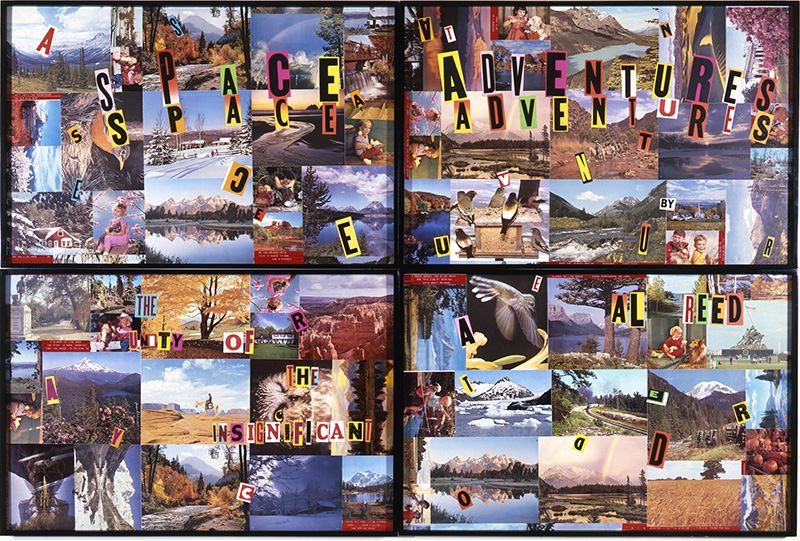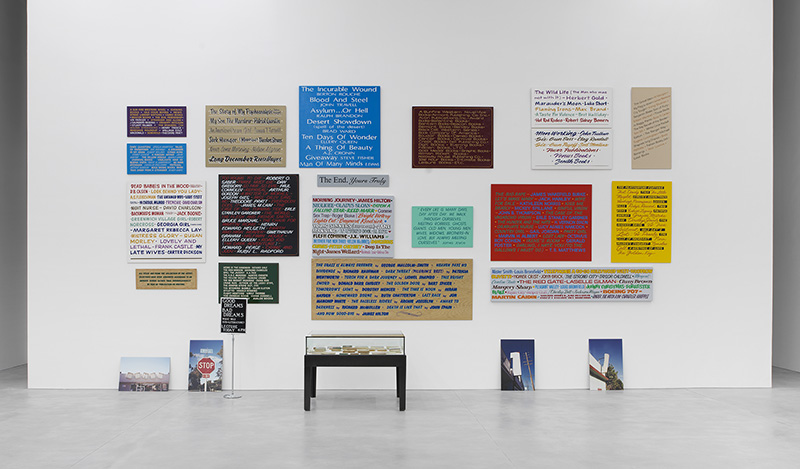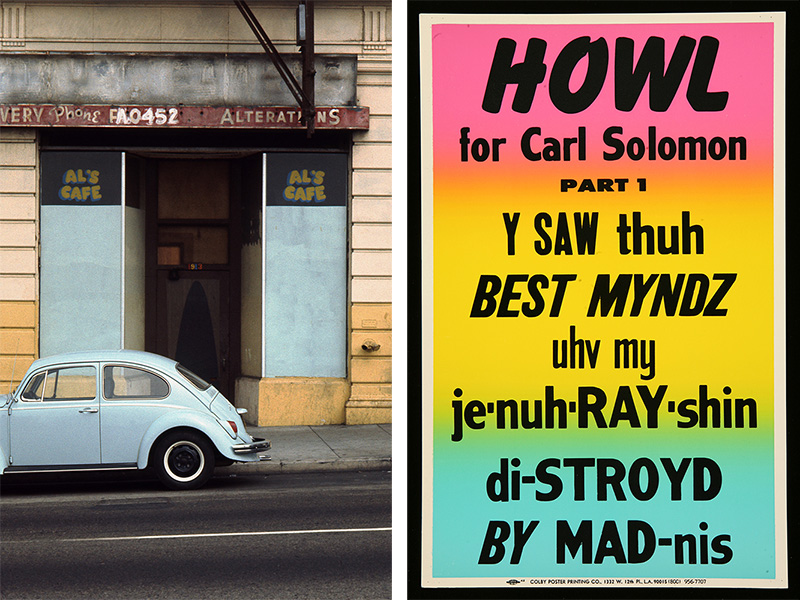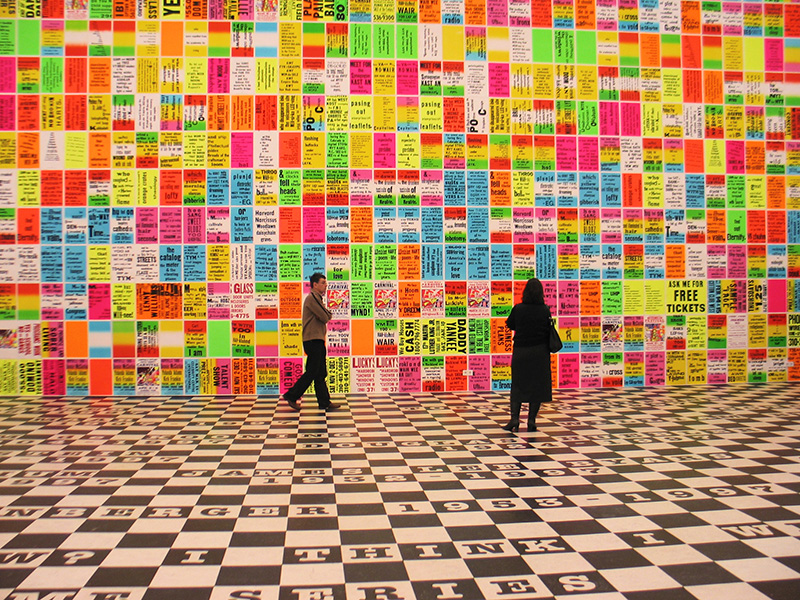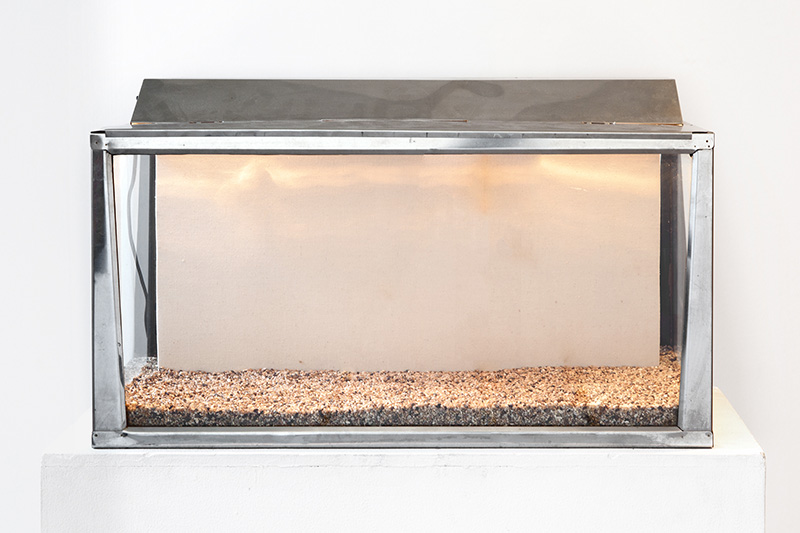ART-PRESENTATION: Allen Ruppersberg
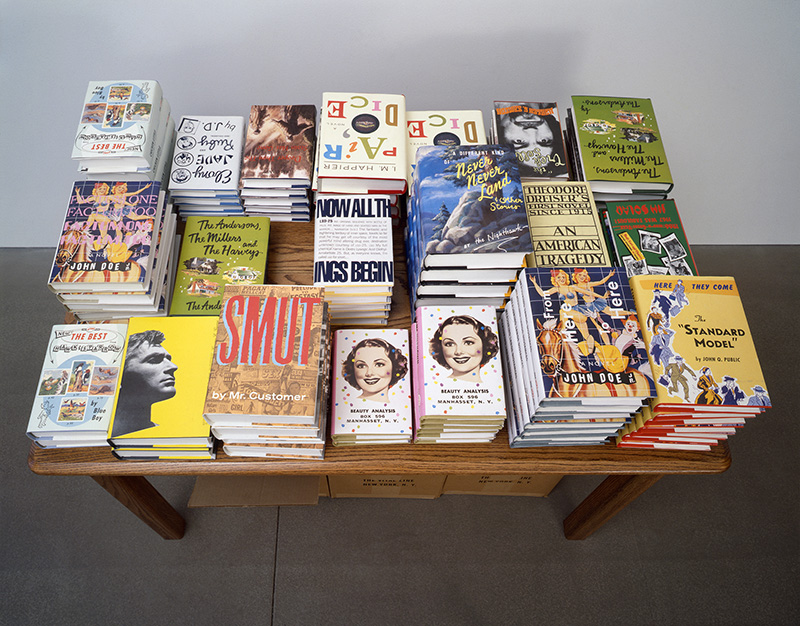 Among the artists of Conceptual art’s first wave and one of its most rigorous and inventive figures, Allen Ruppersberg has since the late 1960s maintained a practice that invites a continued reinvestigation of mass culture and its byproducts. His enduring influence comes from what has from the beginning been an approach to making art that is decidedly nonhierarchical, open to mixing media, techniques, and styles, while moving freely from one idea to the next.
Among the artists of Conceptual art’s first wave and one of its most rigorous and inventive figures, Allen Ruppersberg has since the late 1960s maintained a practice that invites a continued reinvestigation of mass culture and its byproducts. His enduring influence comes from what has from the beginning been an approach to making art that is decidedly nonhierarchical, open to mixing media, techniques, and styles, while moving freely from one idea to the next.
By Efi Michalarou
Photo: The Walker Art Center Archive
The Allen Ruppersberg’s retrospective “Intellectual Property 1968-2018” at The Walker Art Center features 120 works made over the past 50 years divided in 5 thematic sections, and includes Ruppersberg’s photo works combining text and image, early assemblage sculptures, and his groundbreaking environments participatory projects that helped put Los Angeles on the map as a center for Conceptual Art. Since the 1970s, the artist has drawn from his vast archive of books, newspapers, records, films, and ephemera to create work ranging from meticulously detailed drawings of books to sculptures derived from vintage comics. The exhibition also includes a progression of the artist’s more recent, immersive installations made from materials such as commercial advertising posters, large-scale photographs, and hand-painted signs. The section Locations: 1968–1973 includes a range of Ruppersberg’s earliest “Location Pieces” made as site-specific projects or assemblages and show his engagement with found objects and elements from nature. Also included are examples of the artist’s photo works, primarily made in and around Los Angeles between 1968-1974, in which he formed wry narrative vignettes using text and image. In the key early works “Al’s Café” (1969) and “Al’s Grand Hotel” (1971), he created viewer-activated spaces, in this case a functioning café with small assemblage sculptures served as “meals” and later a hotel, complete with themed guest rooms and entertainment. Deftly combining sculpture, performance, and the prepared environment, it can be seen today as progenitors of what became known in the 1990s as “relational aesthetics”. Reading and Copying: 1974–1984: Ruppersberg’s affinity for novels, screenplays, newspaper articles, and other writing have informed much of his work since the mid-1970s. Some works depict books as objects, as in the painting “Greetings from California” (1972), where a book floats over the Hollywood hills. Other works use his own handwriting, as in “The Picture of Dorian Gray” (1974), a series of 20 canvases onto which he transcribed the entire text of Oscar Wilde’s novel in felt-tipped pen. “Remainders” (1991) is a sculptural work comprised of custom-made, imitation mass-produced books, displayed as if on a bookstore’s discount table. “Reading Standing” Up (2004-2008) is a tiled floor containing a poem to be walked on and read at the same time. The Archive: 1985–2003”: The exhibition includes a range of works drawn from the artist’s vast repository of books, magazines, comic books, newspapers, posters, records, and films. This section features “Cover Art” (1985), a series of photo-collages made from vintage wall calendars; Lectures and Film Screenings (1994), a walk-in installation that evokes a school hallway with audible lectures behind its doors and a window into an “audio-visual room” with aging televisions playing instructional films; “Big Trouble” (2010), a large-scale work based on Uncle Scrooge McDuck comics of the 1950s and “The New Five Foot Shelf” (2001), in which life-size photographs of the artist’s former New York studio line the gallery walls, creating an immersive and unconventional self-portrait. Memorials: 2004–2018: Many of Ruppersberg’s later works laud or memorialize fellow artists, poets, novelists and musicians who were crucial to his own development as an artist. In “Rauschenberg” (2014), a 44-foot collage comprised of cut and collaged letters, he transcribes Robert Rauschenberg’s obituary from The New York Times word for word, creating a poignant portrait. Several of his large-scale memorials are showcased in the exhibition, including “The Singing Posters: Allen Ginsburg’s Howl by Allen Ruppersberg (Part 1-3)” (2003/2005), a mural-scaled work in which the famous Beat poem is printed phonetically on vibrantly colored advertising posters made at LA’s now-defunct Colby Poster Printing Company. New Commissioned Work: As part of his retrospective, Ruppersberg was invited to explore the Walker library and archives to create a new piece. Over the course of several years, he periodically visited the library, poring over boxes of ephemera, including newspaper clippings, invitations, and printed material from the Walker history. He assembled items of interest on the color photocopier and then created photocollages to fill the walls of the exhibition’s final gallery. Accompanying the environment are brightly-painted furniture objects derived from generic items traditionally created for stage sets and constructed for visitors to explore the space.
Info: Curator: Siri Engberg, The Walker Art Center, 725 Vineland Place, Minneapolis, Duration: 17/3-29/7/18, Days & Hours: Tue-Wed & Sun 11:00-17:00, Thu 11:00-21:00, Fri-Sat 11:00-18:00, https://walkerart.org
